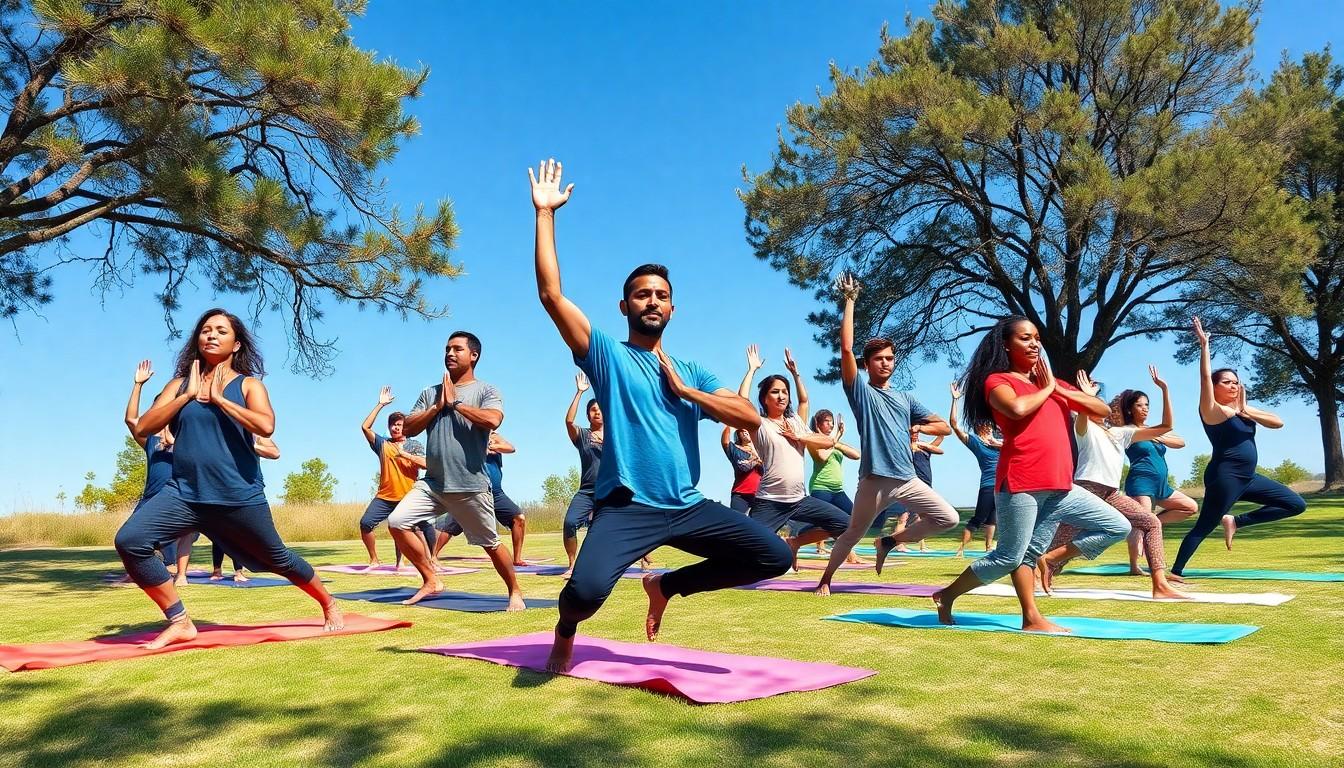The Best Fluffy Pancakes recipe you will fall in love with. Full of tips and tricks to help you make the best pancakes.
In a world buzzing with distractions, mindfulness group activities offer a refreshing escape. Imagine gathering with friends or colleagues, not to discuss deadlines or weekend plans, but to explore the art of being present. It’s like a spa day for the mind, minus the cucumber slices on your eyes. These activities not only boost mental clarity but also foster deeper connections, turning acquaintances into allies in the quest for tranquility.
Whether it’s a group meditation session or a mindful nature walk, these activities invite participants to slow down and savor the moment. They transform the mundane into the magical, proving that mindfulness doesn’t have to be serious business. With laughter and shared experiences, groups can cultivate a supportive environment where everyone can thrive. So, why not dive into the world of mindfulness group activities and discover the joy of being fully alive, together?
Understanding Mindfulness Group Activities
Mindfulness group activities center around collective practices designed to enhance awareness and presence. Engaging in these activities provides a unique opportunity for individuals to connect with each other while fostering a deeper understanding of mindfulness.
Definition of Mindfulness
Mindfulness encompasses the practice of being fully present in the moment, free from distraction. It involves observing thoughts and feelings without judgment. By focusing on the here and now, individuals cultivate an awareness that enriches daily experiences. Mindfulness techniques can include various practices, such as meditation and breathing exercises. These approaches serve to ground participants, allowing them to appreciate life’s simplicity.
Importance of Group Activities
Group activities amplify the benefits of mindfulness through shared experiences. Participants enjoy support and camaraderie while practicing mindfulness together. Engaging in these activities fosters a sense of community, reducing feelings of isolation. Connection among participants enhances motivation and accountability, making the practice more enjoyable. Group settings also encourage diverse perspectives, enriching personal insights. Consistent participation can lead to improved emotional regulation and resilience as participants navigate life’s challenges together.
Types of Mindfulness Group Activities

Mindfulness group activities come in various forms, each contributing to mental clarity, connectedness, and well-being.
Meditation and Breathing Exercises
Group meditation sessions help participants focus on their breath and cultivate awareness. These activities generally involve guided practices that encourage relaxation and concentration. Breathing exercises often incorporate techniques like deep breathing or box breathing, promoting calmness and reducing stress. Participants can share their experiences, enhancing understanding and support within the group. Many find that practicing together deepens the mindfulness experience and fosters a stronger sense of community.
Mindful Movement Practices
Mindful movement practices include yoga, tai chi, and qigong, blending physical activity with mindfulness. These activities encourage participants to pay close attention to their bodies and breath during movement. Often, participants engage in flowing sequences that highlight the connection between mind and body. Such practices can enhance physical awareness and promote emotional balance. Group settings amplify motivation, enabling individuals to explore their limits in a supportive environment.
Creative Expression and Art Therapy
Creative expression activities, like painting or journaling, provide an avenue for exploring thoughts and emotions. Engaging in art therapy promotes self-discovery and helps participants articulate their feelings without judgment. Individuals often gain new insights through the process of creating. Group discussions around the artwork can further enhance connection and understanding. These activities foster an enriching atmosphere where creativity thrives, benefiting overall mental health.
Benefits of Participating in Mindfulness Group Activities
Mindfulness group activities provide various benefits that enhance mental and emotional health. Participants experience these advantages through shared connections and practices.
Emotional Wellness
Emotional wellness improves significantly through mindfulness group activities. Engaging with others fosters a supportive environment, allowing individuals to express feelings openly. Regular practice helps reduce anxiety and stress, promoting resilience. Group settings encourage collective learning, where members share coping strategies. Moreover, mindfulness techniques develop emotional regulation, leading to healthier responses to life’s challenges. Participants often report greater self-awareness and enhanced mood stability.
Social Connection
Social connection serves as a vital advantage of participating in mindfulness group activities. Building relationships within a group creates a sense of belonging and community. Together, members develop shared experiences that deepen interpersonal bonds. Interaction during activities fosters understanding and empathy among participants. Group participation reduces feelings of isolation, linking individuals with shared goals and values. Strengthened friendships encourage accountability and commitment to mindfulness practices.
Improved Focus and Awareness
Improved focus and awareness arise from consistent involvement in mindfulness group activities. Participants cultivate sharper concentration through collective meditation and breathing exercises. Exposure to diverse practices broadens individual perspectives on mindfulness. Group dynamics stimulate curiosity, prompting participants to explore new techniques actively. This environment enhances overall awareness, leading to a richer experience of the present moment. As focus strengthens, daily life tasks become more manageable and fulfilling.
Tips for Facilitating Mindfulness Group Activities
Facilitating mindfulness group activities requires careful planning and attention to participant needs. Key elements include creating a safe environment and incorporating diverse techniques.
Creating a Safe Space
Establish a welcoming atmosphere for participants. Comfort in the environment fosters open communication and encourages expression. Clarity about guidelines and expectations promotes trust. Encourage participants to share thoughts and feelings without fear of judgment. Provide seating arrangements that support comfort during activities. Regular check-ins during sessions help participants feel valued and connected. Use calming visuals or sounds to enhance relaxation and focus.
Incorporating Diverse Techniques
Integrate various mindfulness practices to cater to different preferences. Include meditation, yoga, and mindful walking exercises. Offer creative activities like painting and journaling for emotional expression. Encourage breathing exercises to enhance relaxation and presence. Diversifying techniques keeps sessions engaging and invites participation. Allow participants to choose their preferred practices for personalization. Regularly rotate activities to maintain interest and build community through shared experiences.
Conclusion
Mindfulness group activities offer a powerful way to enhance emotional wellness and foster community. By engaging in shared experiences participants not only cultivate a deeper awareness of the present moment but also build lasting connections with others. The supportive environment created through these activities encourages open expression and reduces feelings of isolation.
As individuals explore various mindfulness practices together they discover the joy of being present and the strength found in community. This journey not only promotes personal growth but also nurtures resilience in facing life’s challenges. Embracing mindfulness group activities can lead to a more fulfilling and connected life.


